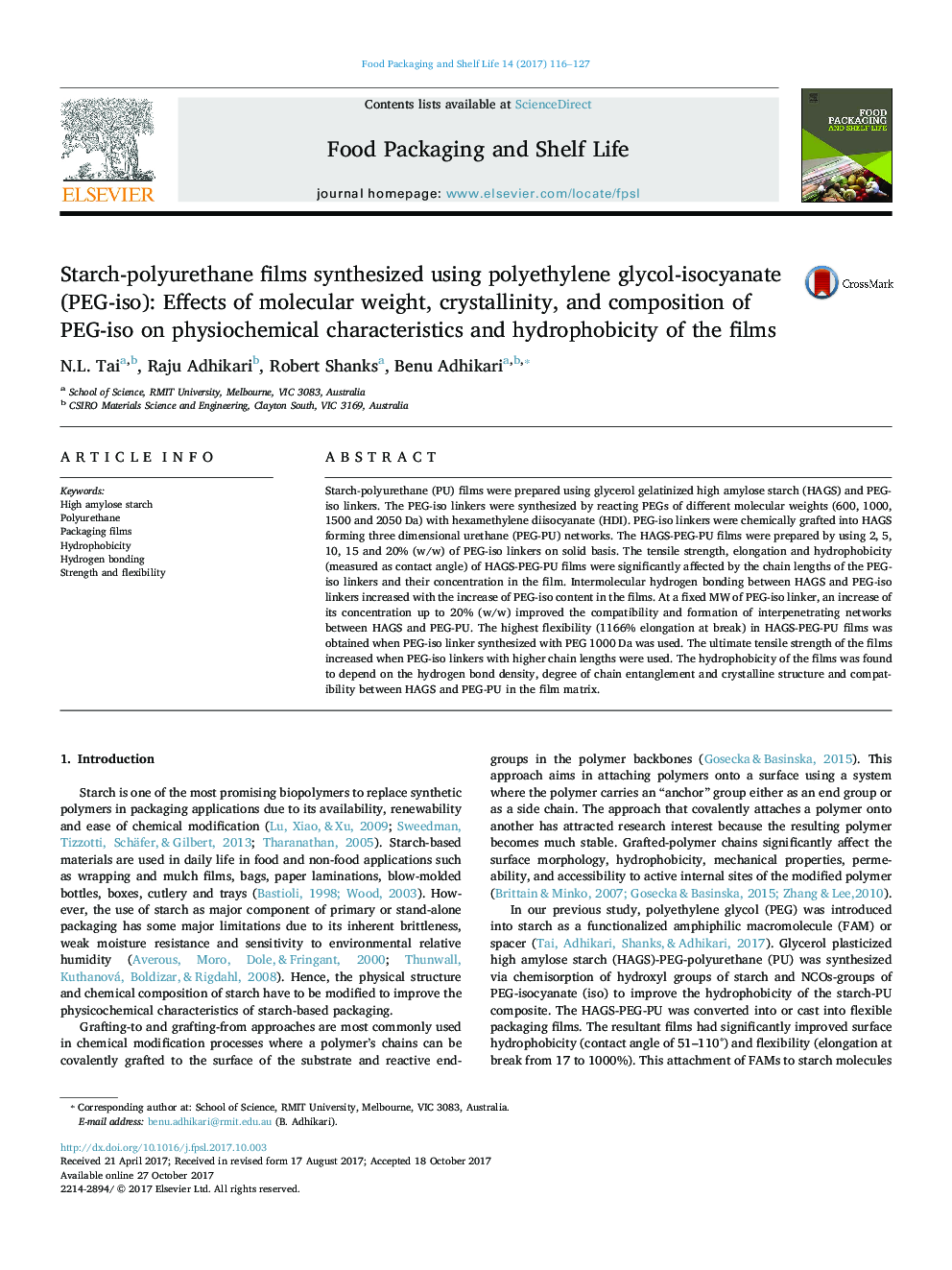| Article ID | Journal | Published Year | Pages | File Type |
|---|---|---|---|---|
| 6489329 | Food Packaging and Shelf Life | 2017 | 12 Pages |
Abstract
Starch-polyurethane (PU) films were prepared using glycerol gelatinized high amylose starch (HAGS) and PEG-iso linkers. The PEG-iso linkers were synthesized by reacting PEGs of different molecular weights (600, 1000, 1500 and 2050Â Da) with hexamethylene diisocyanate (HDI). PEG-iso linkers were chemically grafted into HAGS forming three dimensional urethane (PEG-PU) networks. The HAGS-PEG-PU films were prepared by using 2, 5, 10, 15 and 20% (w/w) of PEG-iso linkers on solid basis. The tensile strength, elongation and hydrophobicity (measured as contact angle) of HAGS-PEG-PU films were significantly affected by the chain lengths of the PEG-iso linkers and their concentration in the film. Intermolecular hydrogen bonding between HAGS and PEG-iso linkers increased with the increase of PEG-iso content in the films. At a fixed MW of PEG-iso linker, an increase of its concentration up to 20% (w/w) improved the compatibility and formation of interpenetrating networks between HAGS and PEG-PU. The highest flexibility (1166% elongation at break) in HAGS-PEG-PU films was obtained when PEG-iso linker synthesized with PEG 1000Â Da was used. The ultimate tensile strength of the films increased when PEG-iso linkers with higher chain lengths were used. The hydrophobicity of the films was found to depend on the hydrogen bond density, degree of chain entanglement and crystalline structure and compatibility between HAGS and PEG-PU in the film matrix.
Related Topics
Physical Sciences and Engineering
Chemical Engineering
Bioengineering
Authors
N.L. Tai, Raju Adhikari, Robert Shanks, Benu Adhikari,
